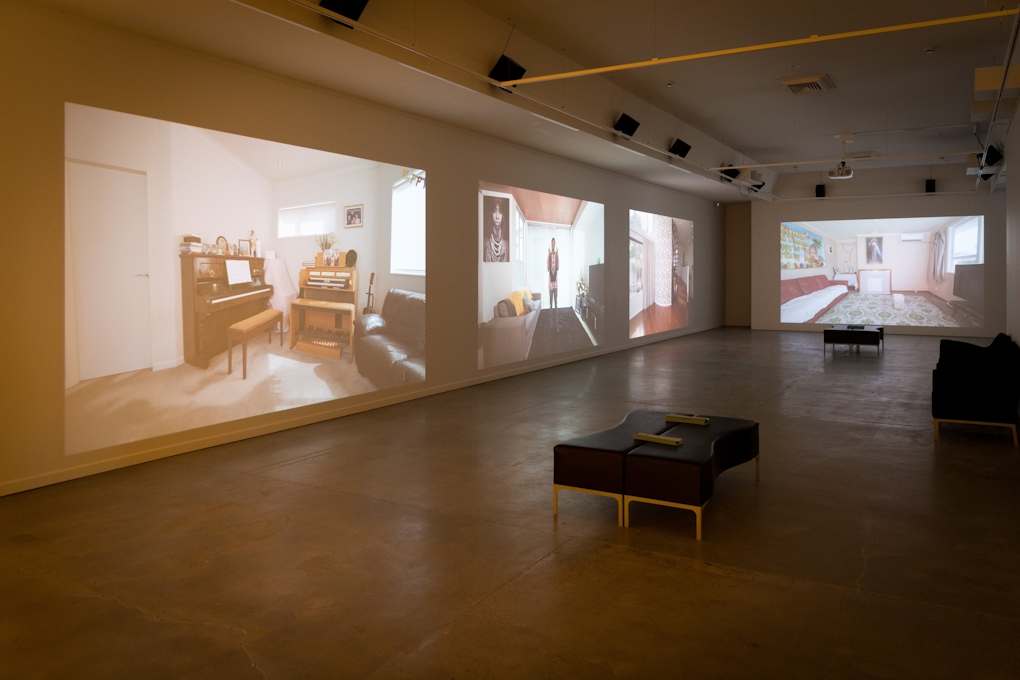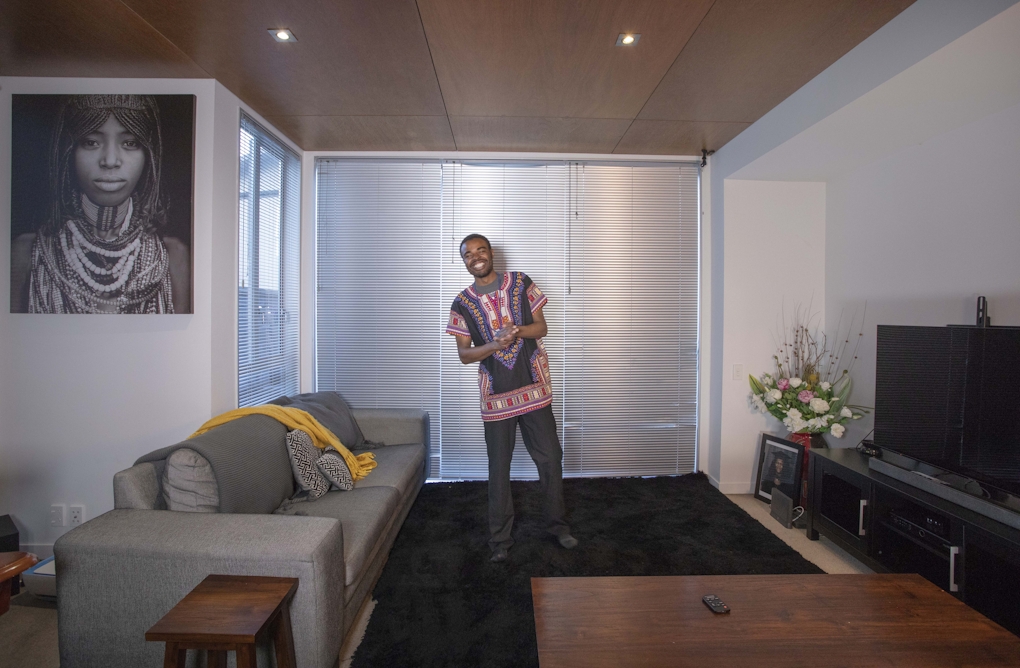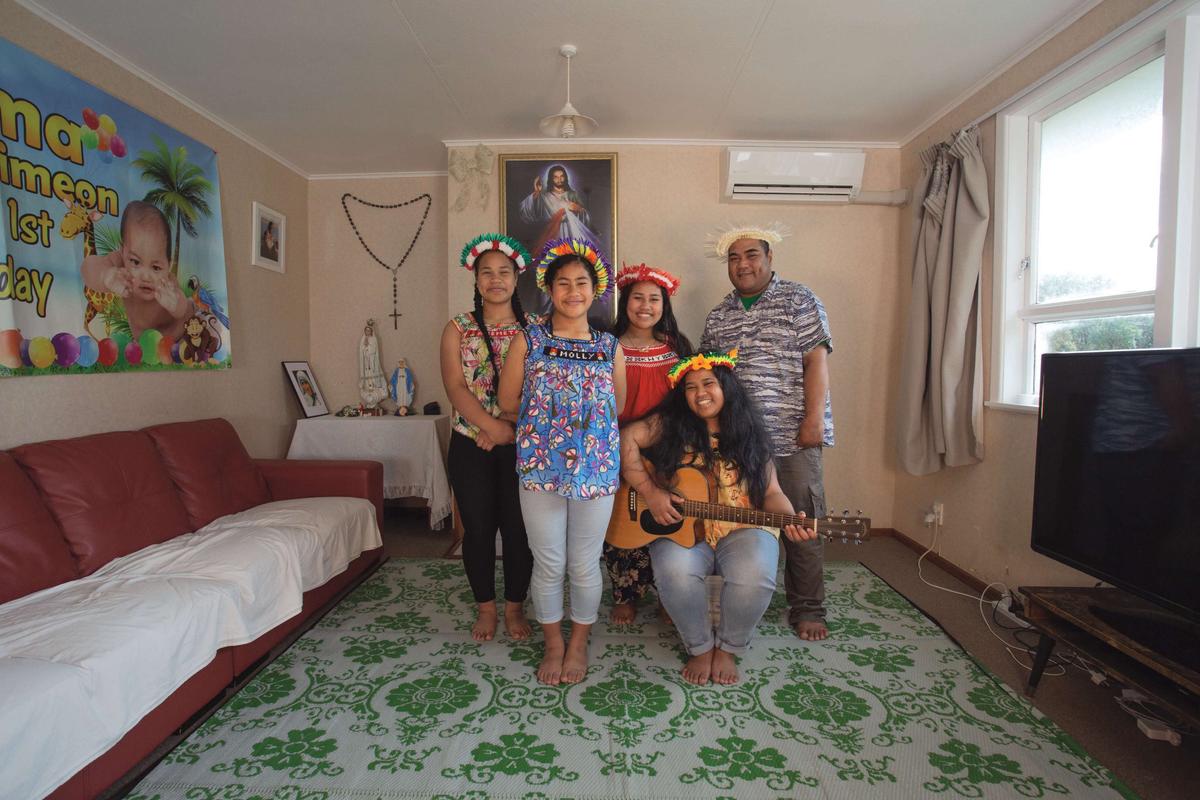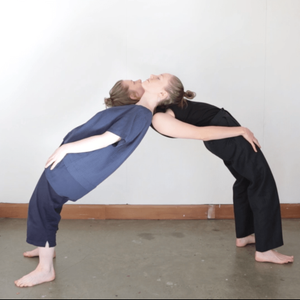Attention is the rarest and purest form of generosity.
Our national anthem has never mustered much of a sensation in my chest, belly or fingertips, or wherever it is that you’re supposed to feel it. No matter the good acoustics in the school hall, nor the thousands of voices singing it alongside me in the stadium, every time I sang it I felt more coerced and bored than I did uplifted and united with my fellow citizens. Its words would fall indolently from my mouth: limp vowels, consonants and syllables pooling in the air around me, murky and monotone like a cheap miso-soup. This may be a treasonous admission but, to me, the allegiance evoked by God Defend New Zealand felt and tasted curdled. All the richness and substance of the sentiment had separated from the ritual of expressing it, which was itself watery, and slightly pungent.
Sat before Musonda Chembo as he delivers his spoken-word anthem, Hand on My Chest, my heart, like his, beats of allegiance. No need for good acoustics nor thousands of people by my side. Alone in the concrete-floored, oblong-shaped gallery of the Dowse Art Museum, I am tethered, mirrored, confronted and neighboured by his words. That a papery video-projection of a man stood barefoot in his lounge can affect this in me, without instruments or even a melody, is the force, and the point, of Olivia Webb’s project Anthems of Belonging, of which Chembo’s performance is one piece of five.

Installation view of Anthems of Belonging (2019) Olivia Webb, The Dowse. Photo by Shaun Matthews
Webb is an interdisciplinary artist specialising in the use of sound with a particular interest in exploring the social potential of this medium. For this exhibition, she has worked alongside several New Zealand families of diverse cultural heritage, helping each of them to compose and present a song in which they reflect on ideas such as belonging and place, and express the values important to them. Five very different, very intimate pieces emerged which together comb through topics from family dynamics, ancestral origins, personal ambitions and spiritual connections, to themes such as social injustice and climate change. Webb recorded these invocations as they were performed by participants in their own homes, and has collated them here in a five-channel video installation.
The footage runs on a constant stream whereas the songs are performed in cyclical succession, meaning four of the five channels are unoccupied most of the time except for a curious (or maybe just sleepy) family dog whose bed happens to be in frame. Given Olivia Webb works predominantly with sound—and so eloquently at that—her insistence on a visual component here, though not flashy or innovative, is notable. These living room tableaux, though unpeopled, are far from vacant. Photos hung, altars erected, carpets stained, wallpapers chosen, rugs lain, instruments hoarded and imprints left in the sofa: all testify to the small ways in which we build homes around us, often accidentally, and how the homes we build express an array of affiliations and values. Webb has used video previously, in artworks such as Attunement (2018) or In Paradisum (2015), though its function seemed mostly indexical in both. By contrast, in Anthems of Belonging the images serve, indispensably, to anchor the symbolic concept of home in a physical space and in the material objects occupying it. As well as the stories they tell about the families, they act as a gravitational bedrock for the work’s musical and lyrical content so it might roam through a more abstract and phenomenological expanse. Belonging, as a concept of such boundless expanses, needs this solid ground.
Anthems of Belonging Olivia Webb
At first, I’d assumed the exhibition to be attempting to find meaning for it, to be asking something close to "what does it mean to belong?" But that is a sweeping question, and this is an intricate work; its anthems contemplate the idea of belonging as a filigree bracelet spun from silk might contemplate light. The Tiibin Family, for example, consider how a sense of belonging can exist without homelands to belong to—their island of Kiribati is among the most vulnerable nations to rising sea levels, leaving their future, as they lament, to “drift through the never-ending ocean.” Yet as they sing of the sadness, the grief and the anxiety evoked by this eroded belonging, they also sing of gratitude for the belonging taking shape in their new home in Aotearoa, where the ocean’s currents have brought them and “Where Kiribati could live on.” For the Vissers-Webbs—the artist’s own family—belonging is found in daily rituals and careful listening, something they express in the improvisational composition used, which demands complete attention to one another, and in their song’s lyrics, which trace love as it threads inconspicuously through a day. Asking “what does it mean to belong?” of such nuanced and varied expressions yields little in the way of an answer. It seems too simple, too easy and too dull, as would be concluding that to belong simply means many different things to these many different people.
It was reading Toni Morrison’s essay, The Foreigner’s Home that I happened across another question which was so grating and incisive that, held up against Anthems of Belonging, it felt like polishing metal.
“What is the matter with foreignness?”(2)
The resonance of this question had not so much to do with the participants’ migrant heritage as it did to the depths that they reached in simply reflecting on themselves, each other, the lives they lead and the hopes they harbour. In an interview with Radio New Zealand, Webb recounted that her initial plan for the work was to have these families interpret and perform God Defend New Zealand in the musical style of their countries of origin. This, she had thought, would excavate Aotearoa’s cultural diversity from the broad, obliterating strokes of monocultural nationalism. She came to realise, however, that to ask the families to perform as cultural ambassadors, or to frame them as such, was itself obliterating. They were foremost families, she says, “and different to other families even of the same cultural blend.”(3) Upon this realisation, the work evolved into the collaborative compositions that we hear. These delve into the very particulars that an "anthem" would usually attempt to subsume and, in doing so, manage to express both the diversity of Aotearoa and, more importantly, the individual complexity of the participants.
True foreignness lies in this complexity, rather than in some flimsy notion of "being from elsewhere." As Musonda Chembo vocalised and distilled in his anthem: In every person there’s a sea. And in every person’s sea, there’s foreignness: parts of us that don’t seem to fit, whether that be in our country of residence, our local communities, our friend groups or our families. Amin Maalouf, the Lebanese-born French writer, imagined identity as a symphony of affiliations. “While each of these elements may be found separately in many individuals,” he writes, “the same combination of them is never encountered in different people.”(4) This sentiment was echoed in the Faulalo-Bull Family anthem Life is Good, wherein they imagine themselves as a many-branched, many-twigged tree, forking excitedly in scattered trajectories, but from a common trunk and root system. For the Faulalo-Bulls, as for Maalouf, it is this branching “that gives every individual richness and value and makes each human being unique and irreplaceable.”
In every person there’s a sea. And in every person’s sea, there’s foreignness: parts of us that don’t seem to fit, whether that be in our country of residence, our local communities, our friend groups or our families.
But as Toni Morrison reminds us, we don’t always cope with foreignness so gracefully. Difference, particularly cultural difference, is often perceived as a threat, and what makes a person unique and irreplaceable is often what makes them the most threatening. And so borders are fenced off and identity is soldered to that which is safe, fixed and shallow enough for the seabed to remain visible. Such hostility to the foreignness of others, Morrison proposes, is ultimately a reaction to the knowledge of our own inextinguishable foreignness and to the fear of our own potential, imminent exile on account of it. When she asks what is the matter with foreignness, she is asking why we are so uncomfortable with it and how we might become less so—in others, and in ourselves.
True foreignness is sameness. It is those hushed mutterings that orbit the louder ways in which we are different—in language, in gender, in race—but which don’t make us foreign in any real sense. What if we lend a microphone and a stage in an art gallery to what is usually quiet, and what if we paid attention to them? What if we dived into the deep seas of other people, as Mr Chembo suggests we do?

Anthems of Belonging – the Chembo family (2019) Olivia Webb. Courtesy of the artist
Anthems of Belonging illustrates the result of doing just that. At its conception and throughout its production, the artwork has ostensibly been about voice: about using one’s voice, and the “deeply personal and political” implications of doing so. In its exhibition phase, however, this focus shifts. Because of the five-channel playback, viewers cannot remain stationary as they might were there only a single projection shuffling through the performances one-by-one. Visitors have to move around the gallery space if they wish to face the singers. Through this subtle gesture, Webb shifts the emphasis away from the look—where traditional theorisations of the moving image tend to place it—and onto the address, to an address, at that, which is entirely uninterested in spectators, and which beckons only the ear.
Listening has long preoccupied Olivia Webb, though this seems a pointlessly obvious observation in reference to the work of a sound artist. But just as much as she employs sound as a medium, she also uses people, and it is in this social dimension of her work that the concept of listening steeps and diffuses. Webb has frequently cited the work and philosophy of Pauline Oliveros as an important influence on her own practice. Oliveros was a pioneer of experimental composition who produced an immense body of electronic music and developed the concept of "deep listening" to accompany it. Among her most fundamental truths was the distinction she perceived to be necessary (and under-recognised) between hearing and listening: “hearing,” she argued, “is simply the wave forms going into the ears and being transformed into electrical energy,” whereas listening is a form of experience. Her suggestions as to how listening ability can be cultivated or "deepened" include such poetic wisdoms as: “Take a walk at night. Walk so silently that the bottoms of your feet become ears.” These actions, though introspective in nature, were, for Oliveros, intently communitarian. Listening is the mechanism through which something other meets and penetrates the self, from which meaning is gathered and interpreted, and action is decided. It is, as such, the seedbed of all interaction. Webb practices directly within this tradition, asking her participants to listen carefully to themselves, and her audiences to listen carefully to others, and then again to themselves as they respond to the work. Anthems of Belonging, in its entirety, hinges on the interplay between address and listening and the osmosis of giving and receiving that underpins it. And what is there to gather and interpret in the songs performed? Family dynamics, ancestral origins, personal ambitions and spiritual connections; fear, anxiety and shame; love, compassion, humility, and a longing to belong.
To call a song an anthem is to cue something proud, steadfast and ecstatic, something that sculpts grand narratives of triumph and beauty and bounty from gleaming white marble. Grandness, however, rarely cues anything more than limp, indolent, miso-soup words and a curdled feeling in the stomach. As I listen to the anthems of the Chembo, Faulalo-Bull, Samson-Godinez, Tiibin and Vissers-Webb families, on the other hand—which have no concern for grandness, and a distaste for marble, I would suspect—I feel a whole, gushing, cleansing ocean up against my core. In their words, I recognise the foreignnesses that I bear, too. Foreignnesses with which we are all familiar, and which belong to us all.

